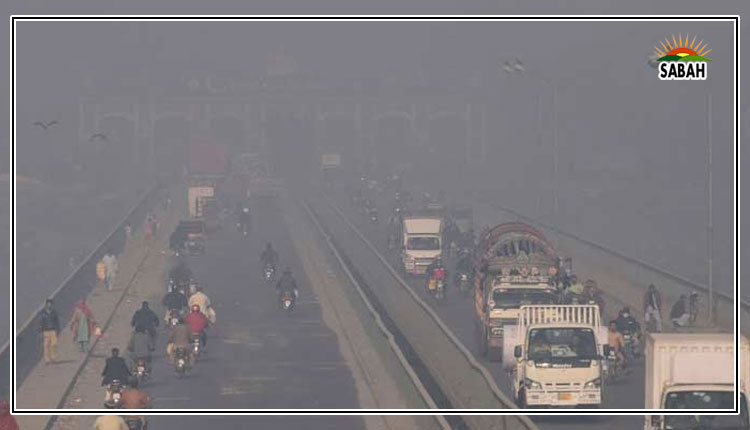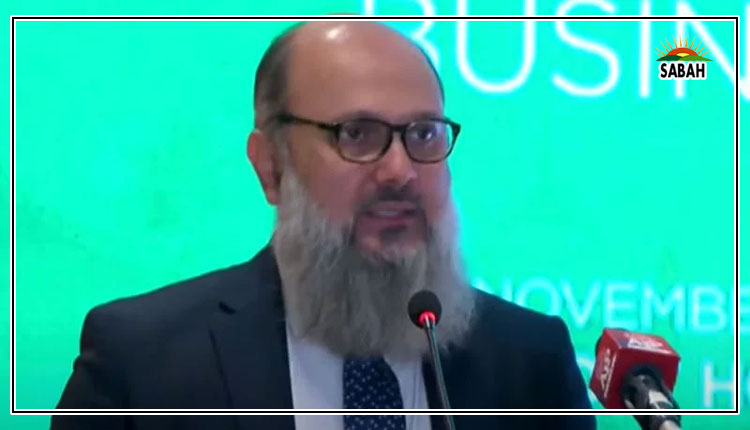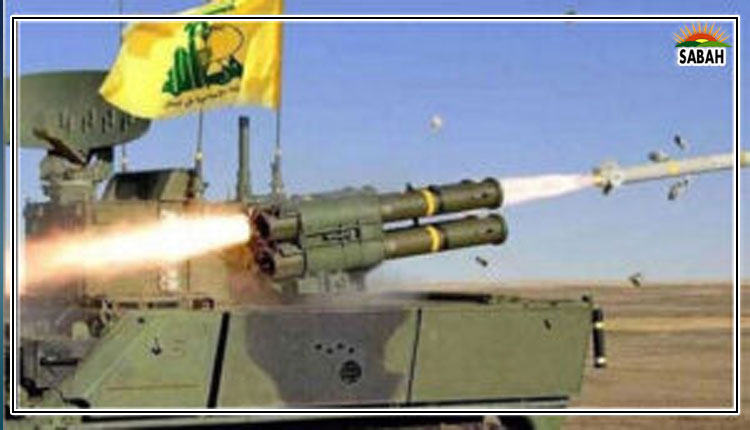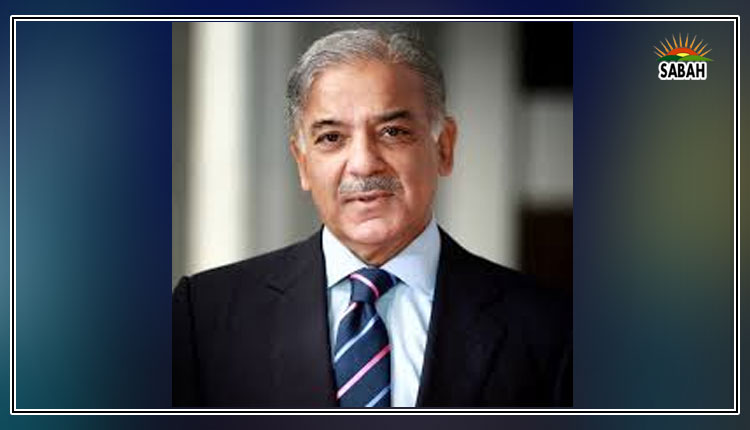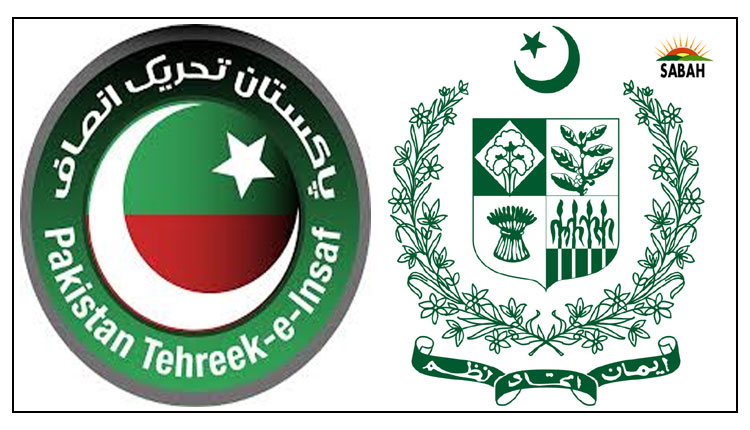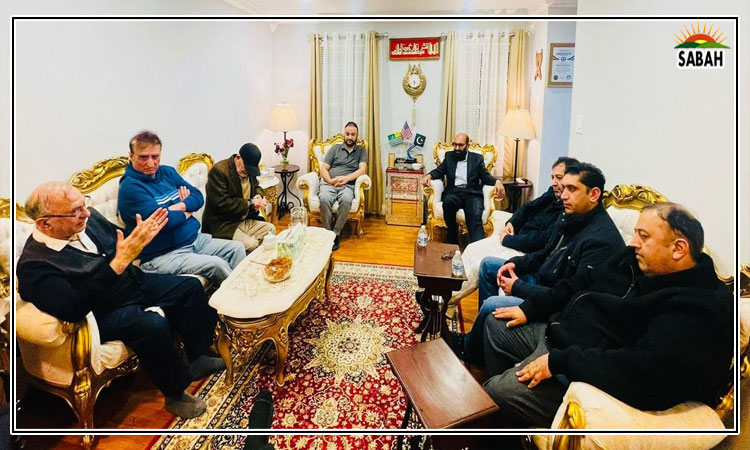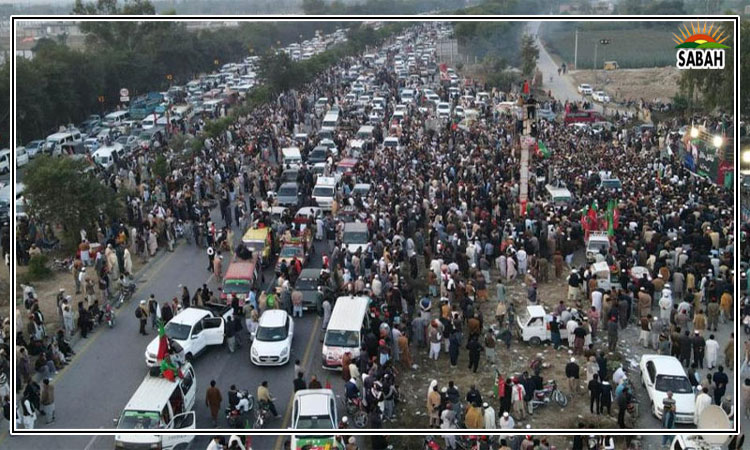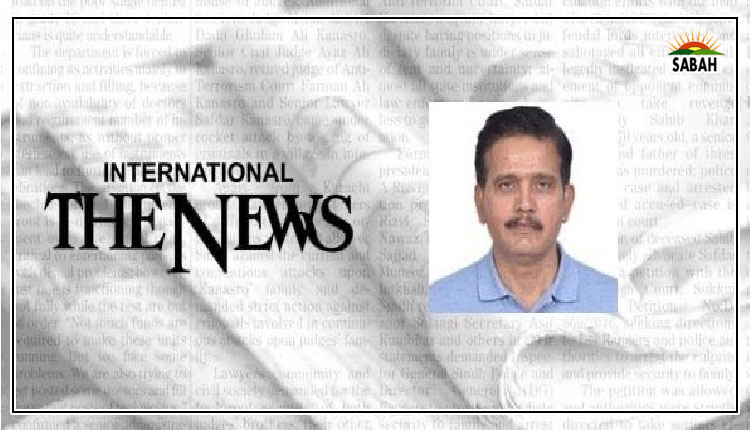Transparency and the RTI… Nadeem Iqbal
Pakistans Right to Information (RTI) Act is playing an instrument role in generating information that can help hold the corrupt accountable for their actions.
The Toshakhana case is one such example of how the constitutional RTI, extended to citizens 12 years ago, can make governments transparent.
The RTI has revived the dormant National Anti Corruption Strategy (NACS) 2002, set up by a military-led government in 2002, which aims to curb behaviour on the part of office holders in the public and private sectors, in which they improperly and unlawfully enrich themselves and/or those close to them, or induce others to do so, by misusing the position in which they are placed.
NAB is the custodian of the NACS, which also has an implementation action plan with different timelines for reforms in different sectors. This plan combines identifying systemic weakness, proposed strategy, actions already taken, proposed measures, proposed timetable, and responsibility.
The focus of the NACS has been preventive reforms, limiting the scope of corrupt practices. And NAB evaluates its performances based on monetary recoveries and convictions of the corrupt. However, previously, some of NABs recovery claims could not stand the scrutiny of the public accounts committee. No wonder the NACS has never been revisited or evaluated with reference to its action plan. However, some evidence suggests that frameworks have been enacted that can prevent or generate the evidence necessary for the conviction of corruption in the court of law.
The yet-to-settle Toshakhana controversy has been a success story involving parliament, civil society, the government, the Election Commission, the media, and the judiciary. Parliament introduced a constitutional amendment to ensure the right to information. The government established information commissions to ensure proactive disclosure of information by different government departments and functionaries, and minimum exemptions to the data which can be withheld from the public.
The Toshakhana controversy emerged last year in February when the Cabinet Division appealed to the Islamabad High Court (IHC) against a Pakistan Information Commission (PIC) order. The PIC had dismissed the Cabinet Divisions plea for exempting information about state gifts. The cabinet had said that it was sensitive as gifts were exchanged between heads of states and heads of governments to give a personal touch to inter-state relations. It further argued that the disclosure of such information could create media hype and result in unwarranted stories, potentially damaging Pakistans relations with foreign countries.
The IHC has yet to decide on the matter, but the sudden change of government resulted in the release of the requested information. Simultaneously, a reference was filed with the speaker of the National Assembly, seeking Imran Khans disqualification as he had failed to declare his earnings in his statement of assets and liabilities, which each legislator has to submit annually to the Election Commission.
On October 21, 2022, under Article 63(1)(p) of the constitution and Sections 137, 167, and 173 of the Elections Act, 2017, the Election Commission disqualified the former PM for concealing the material facts by not disclosing the details of gifts in the statement of his assets and liabilities for the year 2018-19 nor accounting for the sale proceed.
As prime minister, Imran received 160 gifts during three financial years from 2018 to 2021. He deposited 52 gifts in the Toshakhana; the estimated value of these gifts was Rs32.5 million or 3.63 per cent of the total value of all gifts. He retained 55 gifts valued at Rs30,000 or less for each gift with a total value of Rs0.78 million, which translates to less than 0.5 per cent of the total value of gifts. He retained gifts worth 95.84 per cent or Rs141.89 million of the total value of all gifts by paying a retention amount of Rs37.88 million.
In June this year, Prime Minister Shehbaz Sharif formed a high-level 12-member committee comprising the defence minister, prime ministers SAPM, and the ministers for commerce and law and justice to holistically review/revisit the Procedure for the Acceptance and Disposal of Gifts and prepare a new draft, which should be open and transparent in light of the best international practices.
The committee was given one month, till July. However, nothing has come out since then, except the Toshakhana gifts are displayed in the PM House and shown to people through video messages. But it seems that this move is only to save from any future controversies. Otherwise, accepting the Cabinet Division plea, the elegant way is to allow the PM retain the gifts after paying the required minimum price and post the details on the official website. It is virtually impossible to credibly determine the market price of exclusive and expensive gifts that are not available in the market.
Another area where the NACS seems to be delivering is the disclosure of the assets of public office holders. The 2002 strategy says: the current system of disclosure of officials assets does not operate effectively as a deterrent against enrichment by corrupt means, as there is no effective monitoring or transparency. Even the proforma has intrinsic defects that fail to allow the correct picture to appear. One of the major defects is its inability to reflect the acquisition cost since it relies on market price. In addition, the declaration is only opened in case of a query or investigation into the officials conduct.
Citing different case studies regarding NABs experience of assets declaration, the NACS highlights: In several cases, officers have not been filing their returns regularly, and yet the system has failed to detect the omissions. For example, in one case, an officer suddenly added property worth millions of rupees, purchased a few years earlier, and commented that it was an honest omission.
In another case, the official had shown some property to be inherited from his mother, who had died that year. On inquiry, it was learnt that the property was purchased in the mothers name a few years back by the official and declared only after her death. One of the most suspicious entries is income from agricultural land. Since there is no direct income tax on agricultural income, it is the least expensive to declare. However, in many cases, the figures are highly inflated to cover up for possible corruption.
The PIC has declared that the assets declaration submitted by government officers is a public record, which should be publically available. The commission made this decision in August this year when it was approached with a complaint that the Establishment Division was not providing the certified copies of assets declaration of the last three years submitted by the five most senior federal secretaries in BPS 20, BPS 21, and BPS 22 of all 12 cadres.
There is considerable evidence to suggest that because of the RTI, the NACS has finally come of age. Now NAB must redefine it by revising and updating the action plan with new targets and timelines, removing its anti-politicians bias.
Courtesy The News


